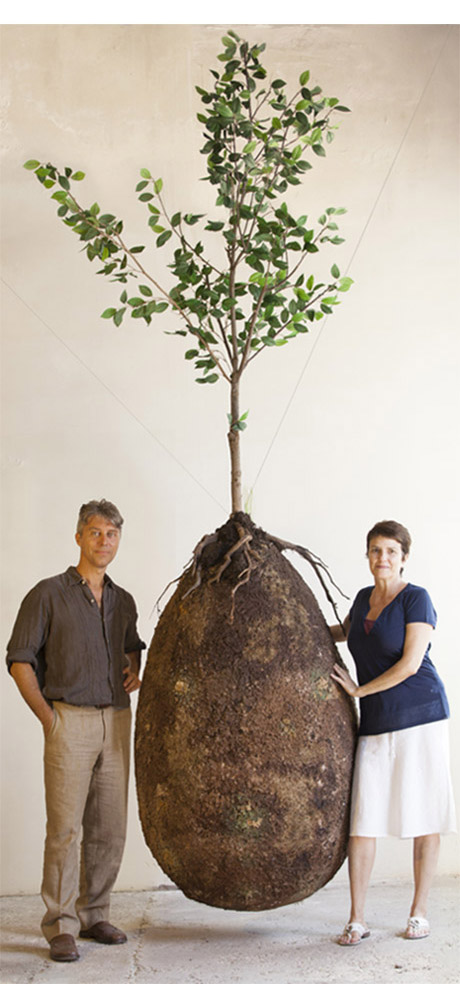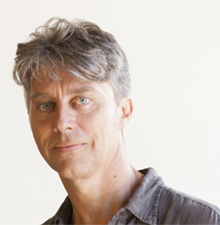Capsula Mundi is a cultural and broad-based project, which envisions a different approach to the way we think about death. It’s an egg-shaped pod, an ancient and perfect form, made of biodegradable material, where our departed loved ones are placed for burial. Ashes will be held in small egg-shaped urns while bodies will be laid down in a fetal position in larger pods. The Capsula will then be buried as a seed in the earth. A tree, chosen in life by the deceased, will be planted on top of it and serve as a memorial for the departed and as a legacy for posterity and the future of our planet. Family and friends will continue to care for the tree as it grows. Cemeteries will acquire a new look and, instead of the cold grey landscape we see today, they will grow into vibrant woodlands, sacred forests.

How Capsula Mundi came about
The Capsula Mundi project roses from a deep examination of the role of designers in our society.
In a culture far removed from nature, overloaded with objects for the needs of daily life and focused on youth, death is often dealt with as a taboo.
We believe that this unavoidable passage, so meaningful, is not the end, but the beginning of a way back to nature.
Inspired by these reflections, we decided to redesign the coffin – an object entirely left out of the design world – using ecological materials, and laic and universal life symbols, such as the egg and the tree.
A universal message
The biological life cycle and its transformations are the same for every living being. It is time for humans to realize our integrated part in nature. Capsula Mundi wants to emphasize that we are a part of Nature’s cycle of transformation. This universal concept goes beyond cultural and religious traditions. Only a tree, a symbol of the connection between the sky and the earth, will mark the resting place of the deceased. As tree after tree is planted, the cemetery will become a forest, free of the architectural motifs that mark today’s memorial grounds. The cemetery will be transformed into a place of nature, one where families can stroll and learn about the natural world, where communities will come together to tend and care for trees. In short, it will become a sacred forest.


Limiting environmental impact
The coffin has a short life cycle and a strong environmental impact.
A tree takes between 10 and 40 years to reach maturity and the coffin is of use for just three days!
We want to plant trees instead of cutting them down! Furthermore, Capsula Mundi urns are made from biodegradable material and come from seasonal plants.
Where we are
Capsula Mundi for the body is still in a start-up phase.This kind of burial is legal in many countries but not everywhere. In Italy, where this project was born, only the Capsula Mundi urn is permitted. However, “green cemeteries” are popular in many other countries, especially in the English speaking countries.Since 2003, when Capsula Mundi was exhibited for the first time at the “Salone del Mobile” (an international furniture exhibition in Milan, Italy) our team has been working to raise awareness and to promote the idea, fully convinced that before changing laws, we need to challenge the way people think.
THE DESIGNERS
Anna Citelli

I’ve been living in Milan since 1987. I currently work at a company called ASC, which I founded with two friends. We offer creative support of concept art, 3D illustration, matte painting and CGI. Prior to that I worked with advertising agencies as a freelance visualizer. This gave me the chance to design layouts for everything, from cars to fresh pasta, from cosmetics to ice cream. Milan offers interesting opportunities. In addition to my “official” work, I have illustrated children’s stories, prepared sets, worked with photographers, made mock-ups (I have made giant three-dimensional lips and rag dolls depicting famous people). I studied in Bari, in the south of Italy, where I lived from 1970 to 1987. Before that I lived in Venezuela, a wonderful country, were I was born in 1964. I have presented my work at national and international design exhibitions and my projects are published in national and international magazines.

Raoul Bretzel

I live and work in Rome, Italy. I am passionate about design and the materials I use. I’m convinced that working between these two constraints (material and form) can convey the emotional impulse behind the initial idea of a project. I initially worked as an industrial designer, but I realized from a very early stage that ecological ethics are rarely respected in mass production. This prompted me to develop projects which are industrially impractical and to turn to less popular design environments. Currently, alongside the decade-long commitment on Capsule Mundi, I run a studio where I develop projects from design to concrete realization, focusing my research mainly on the potentialities of wood. I exhibited my projects in Italy and abroad and they are published in national and international magazines. The Eola lamp has been in the design collection of the MOMA Museum in New York since 1995.

 No products in the cart.
No products in the cart.